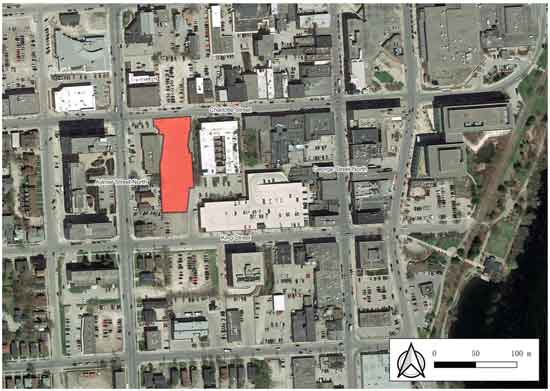Welcome back. When I departed academia, the remote sensing courses I taught were double-listed in Civil and Environmental Engineering and Agronomy, but they had always attracted an eclectic mix of students.
Occasionally we hired some of those students to support projects, especially in their areas of study. Through Landscape Architecture students, for example, I became familiar with landscape design and why I was attracted to a recent study even if it went way beyond design.
Researchers with the University of Waterloo’s School of Environment, Enterprise and Development applied an ecohealth valuation framework to estimate the potential economic value of health benefits of a proposed urban park.
The ecohealth framework was developed to support decision makers in understanding the economic returns of health benefits resulting from investments in urban parks and greenspace. The approach was developed under the leadership of Canada’s EcoHealth Ontario and Green Analytics.
Proposed Urban Park Health
The Waterloo researchers applied the framework to the development of a proposed park in Peterborough, a city on the Otonabee River in Ontario, about 78 miles (125 kilometers) northeast of Toronto. The city’s population was 83,651 in 2021. The proposed park is a 1.2 acre urban square to be developed on land used as a parking lot.
 |
| Annotated image of proposed park in downtown Peterborough (Fig. 1, www.mdpi.com/1660-4601/20/6/4815). |
 |
Landscape architect’s plan for urban park; plan is oriented 90 degrees from annotated image of park (Fig. 2, www.mdpi.com/1660-4601/20/6/4815). |
Ecohealth Framework
Health improvements contribute to economic savings by avoiding health system costs. The researchers focused on three areas where evidence linking urban parks to health outcomes is strongest: higher levels of physical activity, improved mental well-being and reduced exposure to air pollution.
Increased park use would support higher levels of physical activity and improved mental health; increased vegetation cover would reduce exposure to air pollutants.

Ecohealth
framework applied to development of a new urban park, availability of
park space, access to park amenities and increase in park use and
vegetation (from Table 1, www.mdpi.com/1660-4601/20/6/4815).
Frequency of Park Use
The frequency of park use was derived from the population of the park service area and ease of access. The proposed urban park was designed to serve the community within 800 meters of the park, 5900 people of mixed age. Ease of access was estimated from literature and target distances commonly adopted by Canadian jurisdictions, equated to three distance measures--very easy, easy and more difficult access.
Calculating Economic Benefits
Drawing upon all available data and previous analyses, the researchers estimated:
-The economic value of increased physical activity by multiplying the increased number of people engaging in moderate to vigorous physical activity on a weekly basis by the avoided health care costs.
-The improvement in mental health condition by multiplying the population in the park service area by both the percentage improvement in mental health conditions attributed to the park and the avoided economic burden of mental illness.
-The economic value of the health benefits attributed to air quality by multiplying the tree canopy cover within the park by the annual health savings per unit area of cover.
 |
Summary of annual economic benefits of proposed urban park (Canadian dollars, 2019). (Table 2, www.mdpi.com/1660-4601/20/6/4815). |
Competing land use pressures and costs of operation and maintenance can make it challenging for decision makers to support urban park development. Applying the ecohealth framework provided the economic value of health benefits linked to the proposed park.
What’s more, the case study included only a subset of known benefits. Future research could consider such benefits as respite from hot temperatures and noise pollution, increased biodiversity and both social benefits resulting from stronger community cohesion and improved life satisfaction.
I hope you were as impressed with the approach as I was. Thanks for stopping by.
P.S.
Ecohealth economic framework: static1.squarespace.com/static/5c3cebfd45776eee4408f72d/t/5ecb445972e6a72aac117171/1590379619631/FO_8.5x11_EH_REPORT_FA_4WEB+%281%29.pdf
Ecohealth study of urban park in International Journal of Environmental Research and Public Health: www.mdpi.com/1660-4601/20/6/4815
Article on study on EurekAlert! website: www.eurekalert.org/news-releases/989501

Absolutely fascinating. Cost:Benefit ratios add a important measure to objectify decision making that previously was inherently subjective. Thanks for this perspective
ReplyDelete